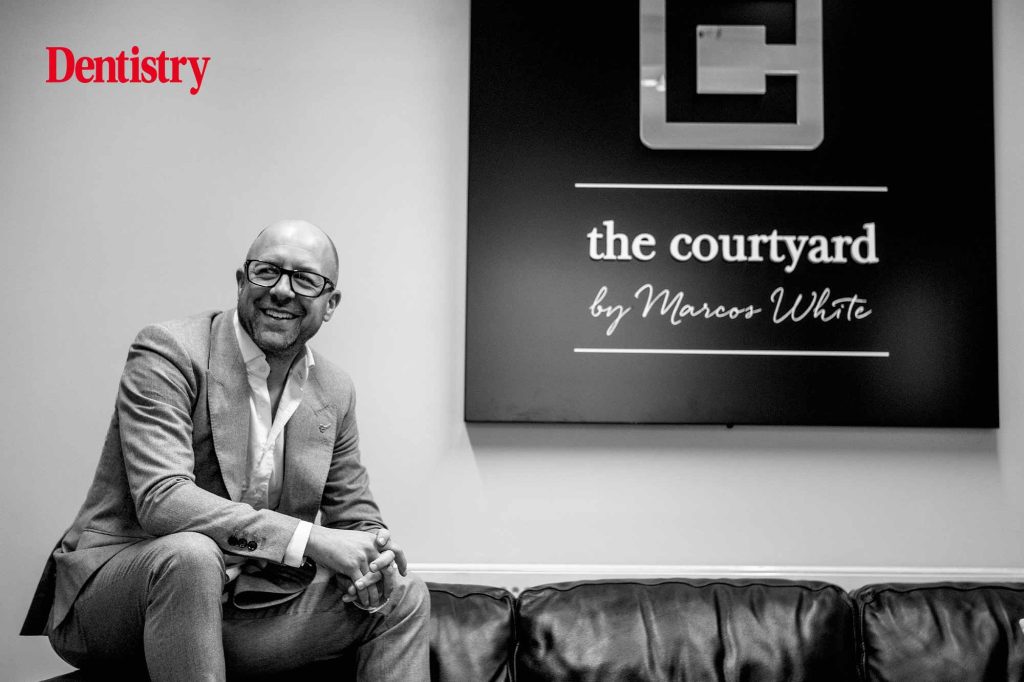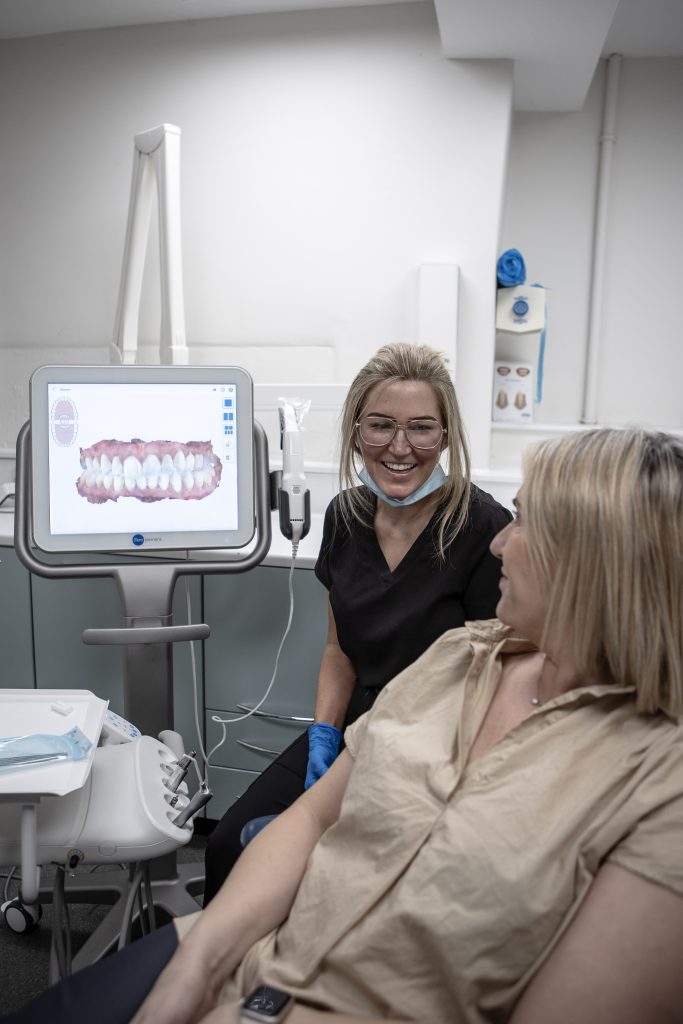
Marcos White shares how digital dentistry has transformed his practice workflow and offers his advice to those hesitant to adopt it.
Please introduce yourself
My name is Marcos White. I have a digital practice in Huddersfield called The Courtyard, which has an intraoral scanner in every room. I’ve been in that business for 20 years and we’ve been digital for 10 of them.
How have you implemented digital dentistry into your practice?
A decade ago, the lab that we were working with at the time suggested we get an intraoral scanner to increase accuracy. We were doing high volume restorative work, so they thought we would benefit. So, we did what we were told – I always do what experts tell me to do – and we bought a Trios in May 2014. That started us on a journey of accuracy, understanding what happens behind the scenes when you take a scan, and how things are made in a digital lab. Plot spoiler: we now have a digital lab – we built one and it’s growing quite fast at the moment.
Along that journey we realised that once you take a scan, there’ll be a file and that file is designed on some software that can be pinged back to you as a visual for you to approve. It completely changed the dynamic between a patient, lab work and a lab. It used to be an impression you threw in a bag, and you’d cross your fingers and hope that what came back was decent. But the more interdigital we got, the more you could see behind the scenes. That became quite fascinating and that’s where the curiosity started, really.
Making better decisions
I started to be curious with this lab at the time and say, ‘Was that made by a computer or a human?’ And I started to think, if it was on a computer or if a machine made it, shouldn’t it be a little bit cheaper? If you didn’t need as many people to make it, shouldn’t we pay a little bit less?
Later on in the journey, we got our first Itero, and the reason that was different was because it had quite a dramatic theatrical screen attached to it, where both clinicians and patients could see their teeth on screen. Before it was a more accurate device to understand the workings of a lab, but then with the Itero, I can see the teeth on screen, patients can see their own problems on screen – that really started to change our relationship with planning. And to see problems on screen helps both us and patients make better decisions.
You’ve mentioned accuracy, costs and patient engagement – how else would you say digital dentistry has transformed your practice workflow?

The next stage that it becomes transformational is when you go all in. You can’t have a computerised practice with one computer.
When dental practices moved from paper records to computerised, computerised meant a computer in every room. It didn’t just mean that somebody had a computer.
So, to digitise means that everybody has access to those scans somehow. That might mean – like we have – there’s a scanner in every surgery. It also means that those scans are available to be to be viewed on any desktop, and when that happens, the interconnectivity of your team gets transformed. I don’t have a conversation about a patient without a scan being on – it’s a rule that becomes completely transformational.
At our practice, the intraoral scanner is not the only digital thing – everybody has an iPhone, everybody’s on Whatsapp. Even during emergencies, we have a triage Whatsapp that all our team are involved in.
So, a patient calls in, ‘I’ve broken this’ or ‘this snapped’, then I encourage my reception team to have conversations with them on Whatsapp. We will send them the scan that we’ve already got – because we scan all our patients at every check up – and ask which one broke.
That helps us triage to the right personnel – does it need the dental therapist? Does it need a dentist? Does it need us to remake a crown that we’ve already got a file for? Should we print a new crown because we made it two years ago?
So, all of this cool planning and thinking is happening behind the scenes before I’m ever involved.
Big leap forward
I have a phrase that says, don’t bring me your problem – bring me 95% of a solution. This happened, we did this, shall I do this? Yes. I love the fact that all of that planning and thinking can happen with other members of my team before I’m ever involved. That was another big leap forward.
One of the problems in the industry is that we aren’t that far ahead of that evolution because if practices do have a scanner, then they probably won’t have seven, or they probably won’t have encouraged the whole team to think in terms of always looking at a scan – all of these kinds of habits that we now take for granted.
It will take a good few years before the wider dental population get there. But it’s in that magic – that’s where the cool stuff happens.
Were there any advantages of digital dentistry that surprised you?
From a business perspective, it’s the way dentistry feels super lean and effortless in terms of the actions. Even if you think of one instance of taking an impression, it involves a member of your team putting in disinfectant, wrapping it in some paper, putting it in a bag, putting a label on the bag, putting that in another basket to be sent somewhere – all of these messy, analogue processes.
But instead, it’s just a scan and a tap. Every one of these little details makes dentistry cleaner and more efficient. And the times just shrink – the more effortless it becomes to use that makes it potentially more efficient.
And we’re seeing that play out in the numbers. It wasn’t immediate, but now the amount of volume of restorative dentistry that I can put through mine and my practice partners’ hands is quite phenomenal. And I have no doubt that it’s digital that’s behind that.
How has digital dentistry changed throughout your career?
When I started lecturing, when you’d ask how many people had a scanner there would be a few hands and they’d be the geeks. Now most of the room puts up their hand, but I still think they have that next part of the journey to experience where they invest wholesale in digitisation and every room or every dentist has one.
One of our favourite stories is that when we first got our scanner I stopped ordering putty for my associates so that they have no choice but to use the scanner. That’s what ‘all in’ looks like – we’re going to run with this technology. That’s the next leap the profession needs to make, to say this is the only way we’re doing things now.
We’ve already seen a larger proportion of dentists have a scanner in practice, but one of my other catchphrases is ‘if you have a good idea, have it twice’. If you’ve seen how a scanner can make one of your dentists more effective, quicker or more efficient, then have that same idea again in a different room with another dentist or with your treatment coordinator, or with a dental therapist. And the longer you take to make that decision, you’re just slowing your advancement.
I see it all as this continuum – we’ll always be trying to be at the front of that and experiencing those advantages. And now we can definitely see it in even in the accounts and in the amount of dentistry we can do with less people.
What advice do you have to anyone who might be hesitant to adopt digital dentistry into their practices?
Most of the barriers aren’t really there anymore. We’re not early adopters anymore, we’re past that. The early adoption concerns were if it would become obsolete, if it was a passing fad, whether there would be a new, better one out next Tuesday, etc. We’re past those points now. I don’t think there are those big reservations.

For me, you can look at advantages in many ways – patient benefits, accuracy, efficiency. But I also enjoy the dentistry I do more now, and you can’t really quantify that. For example, I enjoy the way I communicate with my team, so there are these things that you can’t put on a spreadsheet, but they are just better.
The other obvious one is, ‘hands up in the room who thinks it’s just a passing fad’. Are we ever going to have a conversation like, ‘do you remember digital dentistry? Oh, that went out of fashion, didn’t it?’. No one is ever going to say that. You’re only delaying your own advancement, again, or your practice’s or your patients’. There’s no counter argument.
Where do you see digital dentistry going in the next five years?
Digital dentistry will become more embedded, in the same way that in my practice everybody accesses it like second nature. And 3D printing is another big leap forward, but just the sheer normalisation of it. We will all be sending pictures of the scans to patients as standard, they will expect that. It will become normal, and you will only think in digital terms, really. That’s what will happen. There won’t be another big piece of tech that drops. That’s not it. It’s just about becoming normal, standardised, and large scale.
Going back to the lab example, with every scan we receive we make a digital design for a crown or a veneer, etc. We have designers linked to our lab that are global, 24/7, in different parts of the world and they can respond in different time zones, whenever that scan arrives with us. So, the people that are connected to our lab, I don’t even know where they live in the world. All I know is that I’ll get a design back within 15 minutes to share with a patient. That’s what digital can do. And that blows your mind a little bit – that ‘on demand’ nature.
No one is putting anything in a bag in the post anymore, it’s just instantly coming back to them to be reviewed for the patient. They are some mind-blowing things, but they’ll only happen once more of the general population embrace it.
Follow Dentistry.co.uk on Instagram to keep up with all the latest dental news and trends.


